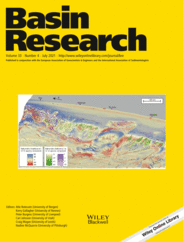
Full text loading...
 , Sara Lafuerza2, Anne Le Friant1, Roger Urgeles3, Louise Watremez4
, Sara Lafuerza2, Anne Le Friant1, Roger Urgeles3, Louise Watremez4
The Grenada Basin was affected by at least two flank collapse debris avalanches from the Montagne Pelée volcano during the last 130 ka. These mass‐transports combine with their derived overpressures built up may cause the long‐term and long‐distance deformation that can be observed nowadays.
West off Martinique (Lesser Antilles), the Grenada Basin submarine sediments were affected by the emplacement of Debris Avalanche Deposits (DAD). Montagne Pelée Volcano has experienced three major flank collapses during the last ca. 127 kyrs, resulting in a cumulated volume of up to 300 km3 offshore. Using a combination of geophysical and geotechnical data, we investigate the effect of these debris avalanches emplacements on the basin hydrogeology and their relationship with the observed sediment deformation in the seismic and coring data. The geotechnical test carried on IODP‐340 cores samples reveal four sediment types within the basin with distinctive mechanical and hydraulic properties: proximal volcanoclastics, distal volcanoclastics, hemipelagic and ash‐rich sediments. These results, together with margin stratigraphic models obtained from seismic reflection data, were used as inputs for the numerical finite‐element model. This model shows that the coupling of the sediment properties with the mid‐ to low‐sedimentation rates results in the development of low overpressures prior to the first flank collapse at 127 ka. However, the emplacement of the first two DADs, between 127 and 36 ka, developed high overpressures ratios (λ* > 0.9) in the easternmost part of the Grenada Basin. According to the model, the sudden compaction of the pre‐existing sediments due to the DADs load created fluid flow velocities up to 7 times higher than the hydraulic conductivities, which would have thus reduced the sediment bearing capacities and shear strength, favouring their mobilization and deformation. From 127 to 36 ka, the sea‐floor sediments suffered a long‐term deformation driven by the combination of the weight of the emplaced material and the persistence of high overpressure ratios through time. This deformation propagated tens of kilometres away from the DAD’s emplacement and it is possible that still continues today due to the persistence of low overpressure ratios. This long‐term and long‐distance deformation and persisted overpressures are a key factor to take into account in the framework of a geohazards evaluation in areas recurrently affected by earthquakes and volcanic flank collapses.
]
Article metrics loading...

Full text loading...
References


Data & Media loading...

